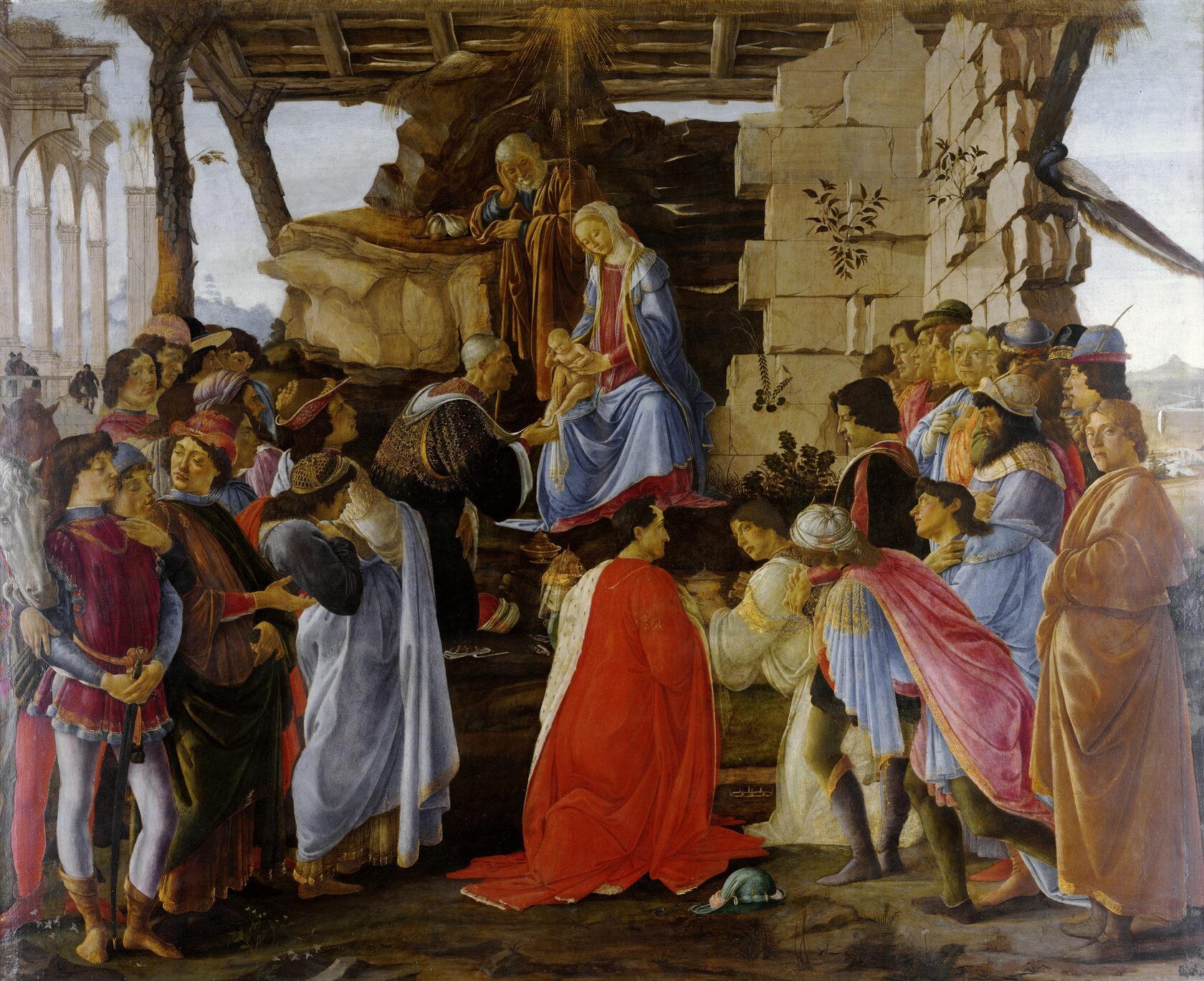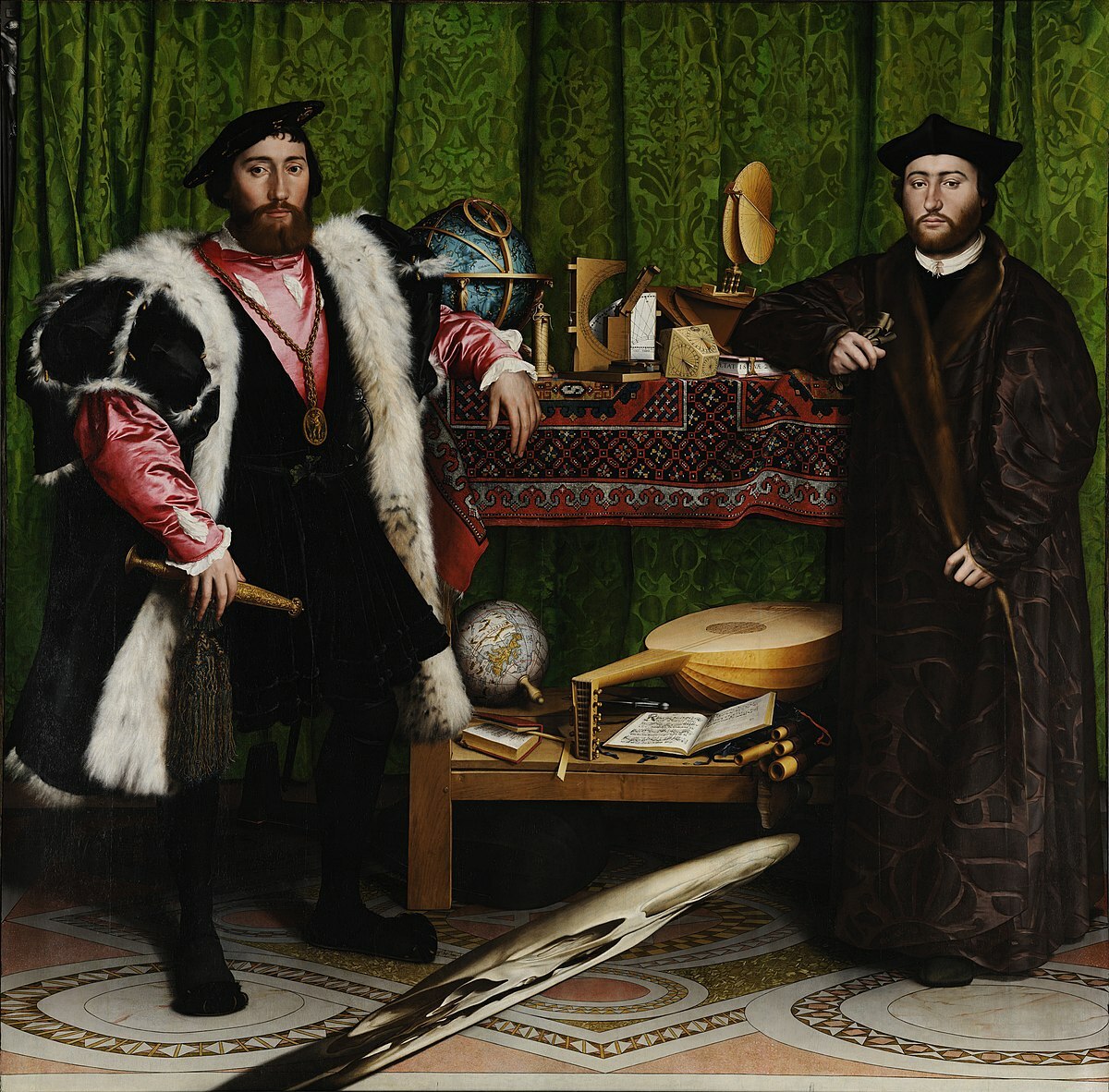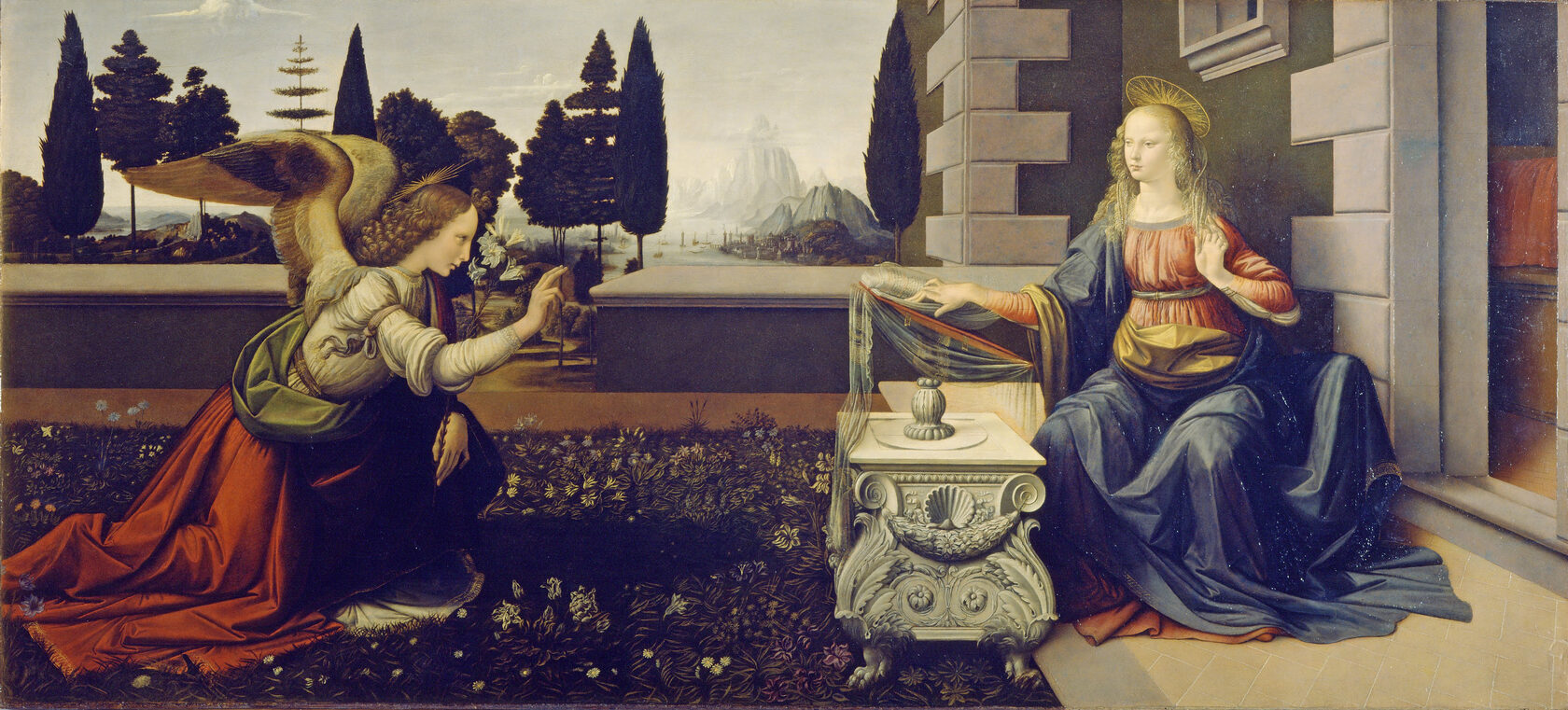Alright, so have you ever sat down in a museum across from a Renaissance painting and noticed something that you’re sure must have some kind of significance? Like, the feeling that you are just missing some essential visual vocabulary to fully understand it? Happens to me all the time.
And that makes sense, these paintings often have the equivalent of inside jokes in them or they use some sort of symbol instantly recognizable to everyone in the 15th-century, but which, in the 21st century is totally obscure. Like, when I see Botticelli’s Madonna of the Magnificat with baby Jesus holding a pomegranate, I think, that family must really be into anti-oxidants… but a 15th-century viewer of the same painting would likely recognize the pomegranate as a symbol of fertility and wealth, and through this symbol, it’s covertly referencing the children and the money of the family who commissioned it: the Medici. Who, if we were 15th century Florentine viewers of this painting, we would also recognize.
The Medici family were not traditional nobility; they made their money in currency exchange in Renaissance Florence, then they used that wealth to commission art and build an international reputation for financial power. So the pomegranate in this painting symbolizing fertility and wealth implies that this family is going to be around for a while. They have both the offspring and the money to stay powerful. And they painted this message, along with some of those children, inside a standard Madonna and Child painting.
These little Easter Eggs and hidden messages are all over the place in Renaissance Art if you know where to look for them. I’m James Earle, a Renaissance Historian and host of the art theory YouTube show AmorSciendi. Today I want to walk you through three of my favorite easter eggs in Renaissance art.

Adoration of the Magi
To start, let’s stay with Botticelli and look at one of his early paintings: The Adoration of the Magi. With a little biblical knowledge, you can probably pick out that this is the scene of three wise men, the Magi, visiting the infant Christ. But through the eyes of a 15th century Florentine you would also notice that those wise men are members of the Medici Family… you’d certainly be able to recognize the one kneeling directly at the baby Christs feet as Cosimo d’Medici.This painting was commissioned to adorn a burial chapel inside a Church, and paintings inside a church tell religious stories… and this one does…but it's also telling the story of status and prestige inside the city of Florence. Art work in a Church, particularly in Renaissance Europe, is a form of public art, and to be featured in a work of public art is a sign of status in any context.
So by having the Medici family standing in as models for the Wise Men, this painting leverages the narratives of the bible to communicate the power structures of Renaissance Florence.
But that’s not even the easter egg I want to talk about in this painting. If we shift our eyes away from the center and toward the right side of the painting you’ll notice two characters who seem uninterested in the central action of the painting and more interested in looking at us, the viewers of this painting.
The older of the two is the man who commissioned this painting, Guasparre dal Lama. He was a financial broker who worked with the Medici in the 1470’s and he points at himself, you know, just to make sure we know who paid for it.
So he’s asserting his own status in Florence in a few ways here: first. He’s in a publicly viewable painting. Second, the painting uses the symbolism of Christianity to assert that he’s close to God. And third, in this painting, he’s featured within the friend circle of the most powerful family in Florence. So he’s worthy of art, worthy of Christ, and worthy of the Medici.
But that’s not the reason this painting makes the list either. The reason this painting makes the list is the younger of the two looking out at us. This is Botticelli. It’s a self-portrait. And by painting himself here, he’s using all those same forms of status to promote himself… but not just himself. He’s asserting the value of the Artist in a community. For Botticelli, artists weren’t just craftsman. They weren’t just people hired to decorate the walls. They are important. Banking isn't the only way to create value. Art has it's place at the party as well. This self-portrait is a great easter egg because it promotes the importance of artists in a community.

Ambassadors
The second painting on this list is Hans Holbein’s painting The Ambassadors. This is a double portrait of Jean de Dinteville and Georges de Selve, two men who worked on behalf of France as Ambassadors. They’re standing beside a shelf containing state of the art scientific equipment, a fancy imported carpet, and some musical instruments.These items clearly tell us that these men were accomplished in all the important intellectual ways. Every item tells us that these men are interesting. They’d be able to play you music while looking at the stars, they could tell you stories of places they’ve traveled, you could count on them to have good taste. This, like an effective Tinder profile picture, advertises all the virtues they have to offer, all the reasons we should be impressed by them. There’s a lot of ego wrapped up in this painting.
But then, across the bottom of this painting, we cannot help but notice a giant smear of paint across the floor. It seems out of place. And if we are standing directly in front of the painting, looking at it directly, this smear makes very little sense.
This smear requires us to change our perspective. If we move to the far right of the painting and look down at the painting, that smear reveals itself to be a giant skull. A death’s head. A big symbol of death, prominently occupying the foreground of the painting. And when a skull like this appears in a painting, Art historians call it a Memento Mori, which translates to “remember thou shalt die”. But more on that later, let’s first talk about the technique that creates this optical illusion.
It’s called anamorphosis. It’s the manipulation of perspective so that the viewer can only perceive an image when viewing it from a specific vantage point. You may have seen some street artists who use this technique.
So in this case, the specific location is from the top right of the painting, and when the skull comes into the focus, the ambassadors and their stuff become more difficult to see. And that’s why I love this easter egg. It’s a giant visual metaphor. When we view the painting directly in front it, from our default position, it’s hard not to be impressed by these two lads. They’ve acquired a lot of stuff and a lot of knowledge. They’re clearly successful in a lot of traditional ways. Swipe right.
But if we physically and metaphorically change our perspective, we’re reminded that none of us can be too proud of ourselves. It’s a check on our impulse toward vanity. No matter how successful we are, the ending will always be the same. That’s what Memento Moris do. They remind us of death; the skull here reminds us of the humility we must also carry with us because, as the skull suggests, we all will die.

Annunciation
The final painting on this list also uses the technique of anamorphism, but this time it’s going to bring life rather than death. This is the Annunciation by Leonardo da Vinci. This painting tells the story of the angel Gabriel visiting the Virgin Mary. It’s a popular scene to paint, and because of that there are a lot of customs and iconography used and reused in paintings of the Annunciation. Like Mary is always in Blue. Blue pigment was the most expensive to make during this time period, so painting a character dressed in that color is a way of conferring value. Some contracts for Renaissance paintings would specify the amount of blue that should appear in the painting, and it’s always reserved for the most important character. So if we view this with 15th century eyes, the blue would carry meaning.So painting Mary in blue is fairly standards and this annunciation is fairly standard in other ways as well. It follows a lot of the traditions surrounding annunciation paintings. Mary traditionally has an open book with her. She’s often pictured seated near a lily, a sign of her purity, for example. But Leonardo’s version adds one strange feature I want to focus on: If you look directly at this painting, Mary’s right arm looks broken or dislocated at the elbow. There’s something wrong with the perspective… the way it lies on the table and holds the book open doesn’t match the rest of her body language.
Once again, we need to shift our perspective. If we stand to the left side of the painting and look up at it, we will find that the arm looks totally normal.
And now that we know this painting should be viewed from slightly below, we can identify another trick. If we move from left to right while looking up at the painting there is a slight optical illusion: Mary’s knees seem to drift apart and her belly seems to swell as the viewer makes this trip across the painting. In other words, she seems to become pregnant.
And when you consider the subject of this painting, that’s exactly what it hopes to communicate. Gabriel is there to deliver the news that she is pregnant. So as we follow the words of Gabriel across the painting from left to right, she becomes more visibly pregnant. I’m a sucker for when the form of a painting matches its meaning, and this is one of the most clever examples of that. The techniques of the painting directly communicate the story of the painting.
And that’s my list. We often appreciate the beauty of Renaissance art, but sometimes we miss interesting clues and fun stories as we don’t have enough knowledge to capture them all. Once you get a few clues, though, once you expand your visual vocabulary to include some of these common symbols and tricks, the paintings become even more interesting and more beautiful. I’ve spent more than half my life studying these paintings, and the more I learn, the more I realize I’m missing. So I guess I’ll keep studying.
